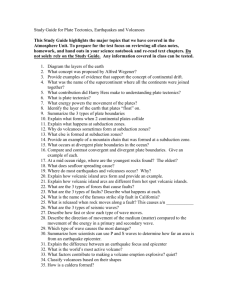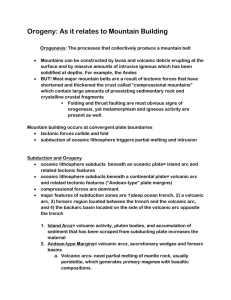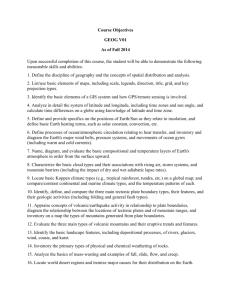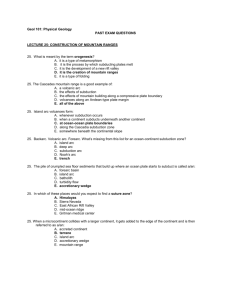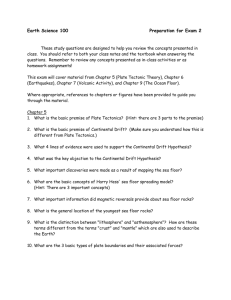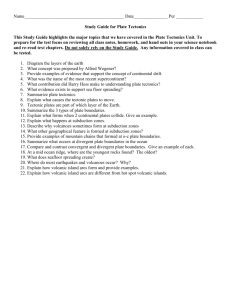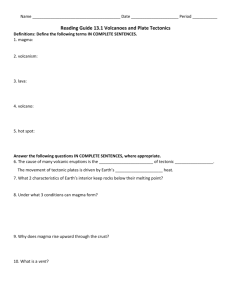The Big Map Project KEY
advertisement
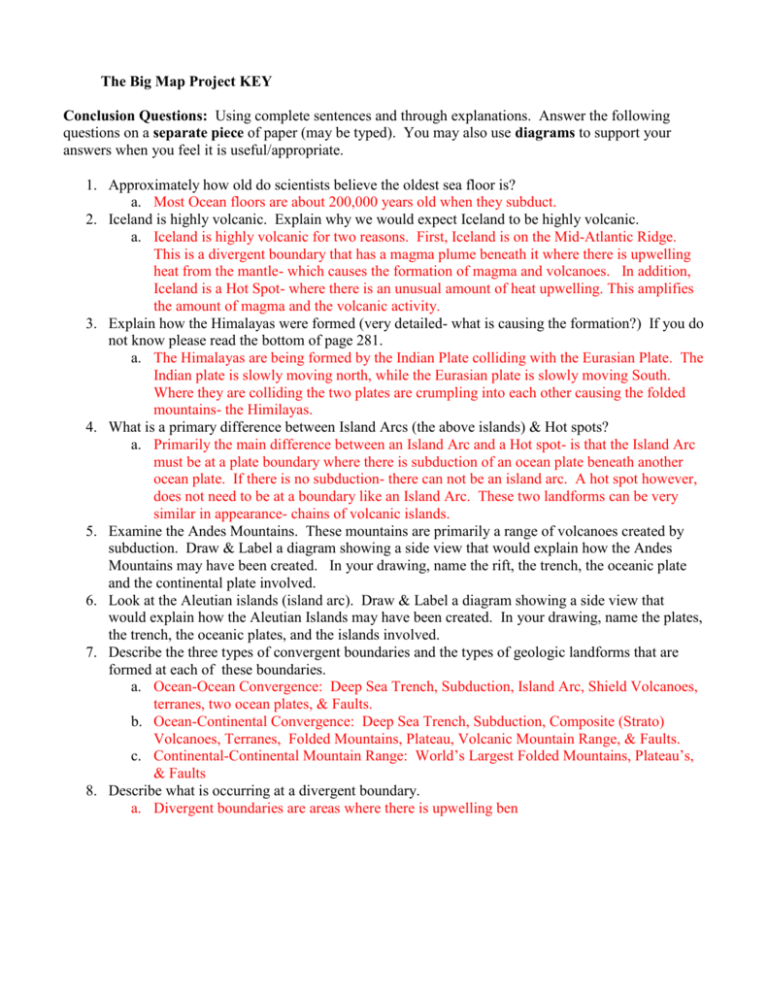
The Big Map Project KEY Conclusion Questions: Using complete sentences and through explanations. Answer the following questions on a separate piece of paper (may be typed). You may also use diagrams to support your answers when you feel it is useful/appropriate. 1. Approximately how old do scientists believe the oldest sea floor is? a. Most Ocean floors are about 200,000 years old when they subduct. 2. Iceland is highly volcanic. Explain why we would expect Iceland to be highly volcanic. a. Iceland is highly volcanic for two reasons. First, Iceland is on the Mid-Atlantic Ridge. This is a divergent boundary that has a magma plume beneath it where there is upwelling heat from the mantle- which causes the formation of magma and volcanoes. In addition, Iceland is a Hot Spot- where there is an unusual amount of heat upwelling. This amplifies the amount of magma and the volcanic activity. 3. Explain how the Himalayas were formed (very detailed- what is causing the formation?) If you do not know please read the bottom of page 281. a. The Himalayas are being formed by the Indian Plate colliding with the Eurasian Plate. The Indian plate is slowly moving north, while the Eurasian plate is slowly moving South. Where they are colliding the two plates are crumpling into each other causing the folded mountains- the Himilayas. 4. What is a primary difference between Island Arcs (the above islands) & Hot spots? a. Primarily the main difference between an Island Arc and a Hot spot- is that the Island Arc must be at a plate boundary where there is subduction of an ocean plate beneath another ocean plate. If there is no subduction- there can not be an island arc. A hot spot however, does not need to be at a boundary like an Island Arc. These two landforms can be very similar in appearance- chains of volcanic islands. 5. Examine the Andes Mountains. These mountains are primarily a range of volcanoes created by subduction. Draw & Label a diagram showing a side view that would explain how the Andes Mountains may have been created. In your drawing, name the rift, the trench, the oceanic plate and the continental plate involved. 6. Look at the Aleutian islands (island arc). Draw & Label a diagram showing a side view that would explain how the Aleutian Islands may have been created. In your drawing, name the plates, the trench, the oceanic plates, and the islands involved. 7. Describe the three types of convergent boundaries and the types of geologic landforms that are formed at each of these boundaries. a. Ocean-Ocean Convergence: Deep Sea Trench, Subduction, Island Arc, Shield Volcanoes, terranes, two ocean plates, & Faults. b. Ocean-Continental Convergence: Deep Sea Trench, Subduction, Composite (Strato) Volcanoes, Terranes, Folded Mountains, Plateau, Volcanic Mountain Range, & Faults. c. Continental-Continental Mountain Range: World’s Largest Folded Mountains, Plateau’s, & Faults 8. Describe what is occurring at a divergent boundary. a. Divergent boundaries are areas where there is upwelling ben
